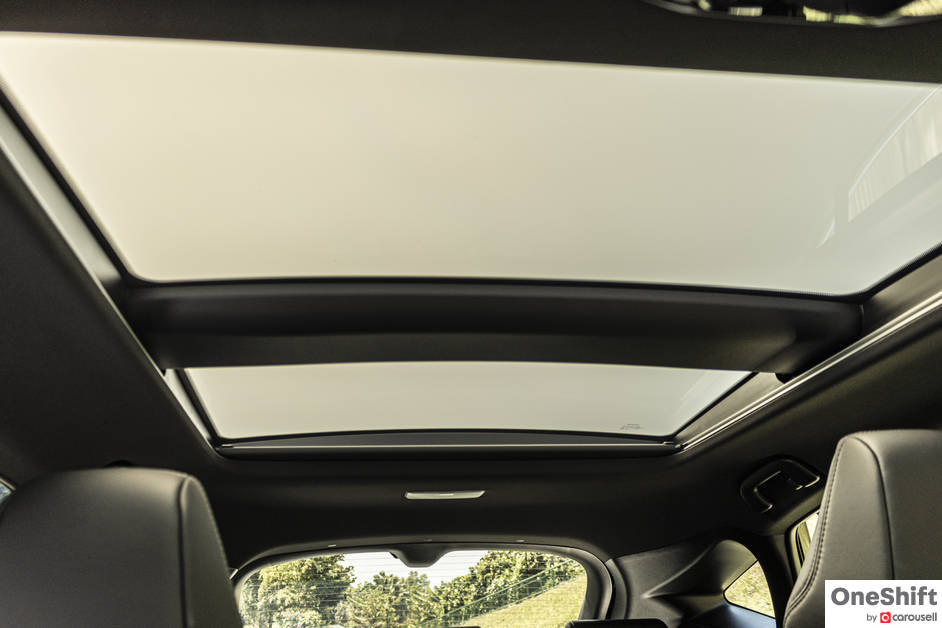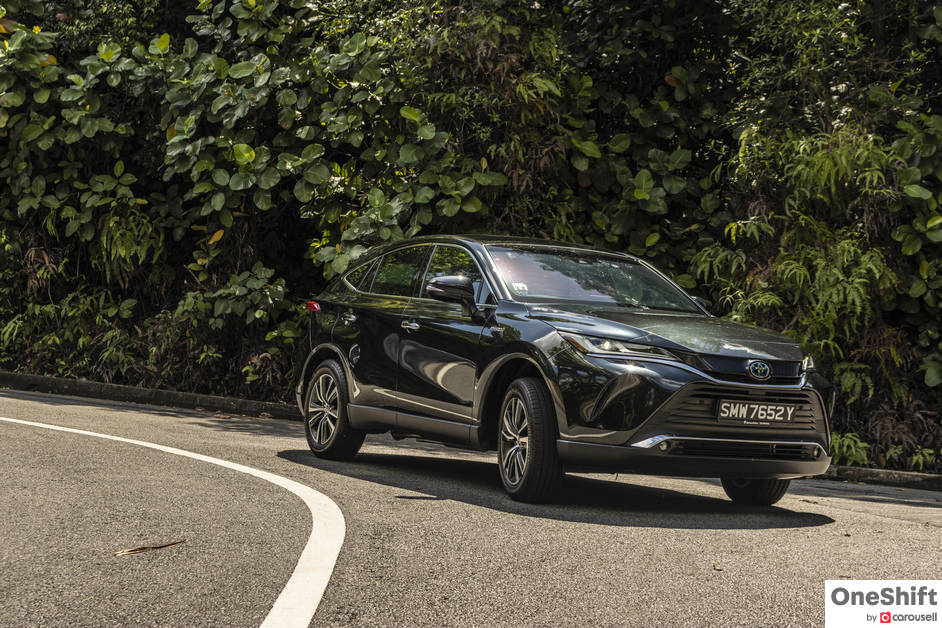Lesser Eagle
In a time where the SUV market is already saturated, the new Toyota Harrier still has quite a lot going for it. But is switching to a hybrid drivetrain a good idea?


Toyota’s approach to their fourth generation Harrier is really quite a mixed bag. For the first two generations, one could say that the grey import Harrier offered here, in most cases was a whittled-down Lexus, powered by a Camry engine; with many owners soothing their egos with a brand rebadge… well that is almost convincing apart from the laughable Lexus logo on the steering wheel, and a few other tell-tale on-body bits and bobs. Well this is a story for another day.

When Toyota introduced the third generation car, Toyota had made the clear decision to step away from their luxury Lexus sibling, and go it alone. Toyota’s official dealer, Borneo Motors were rather late into the game, with parallel importers already snapping up orders from “eagle” buyers, who were keen on buying “almost a Lexus”. But the official dealership here held an ace card, The bird third generation car came with a force-fed turbocharged engine that was borrowed from the Lexus NX300, meaning that not only was the sporty-looking SUV visually quick, it was quite quick off the mark as-well.

The fourth generation Harrier is easily recognisable, with its angular styling and sloping rear end. Like the previous car, viewed from the side, there is quite a bit of frontal overhang, done so that there is enough facia to sculpt that recognisable nose on. Interestingly, the Harrier sports Lexus-aping front DRLs, which are designed to be ‘L’ shaped… I thought that they would have kept this for just their luxury marque.
The LED strip that spans across the bootlid, is a pleasant stylistic touch. In keeping with the SUV theme, the Harrier also sports matt black protective plastic guards that surround the base of the bodywork.

There is no mistaking that Toyota had gone on to emulate Lexus here as-well. A quick glance by those who are familiar with their luxury sister brand will be able to spot a few styling similarities. While you can tell that Toyota had put in some effort in designing the dash, that effort does not seem well translated in certain areas, like the placement of the drive mode selector buttons which seems a little too far away. The centre console, which is probably the most “Lexus-ercised” interior element, may look like a pillow-soft leather touchpoint, complete with dot-stitching. In reality, it is rather cheap-feeling hard plastic.

Cheapness aside, if you do break it down to the upper-middle class chariot that it probably is intended to be, the Harrier’s interior is built reasonably well. Panels fit without a squeak, and there are a good few touchpoints that deserve praise. Mounted on the top of the dash, an 8” touchscreen, flanked by physical menu buttons, fronts the simple-to-use infotainment, and both Apple and Android mobile devices are supported. A wireless charging pad provides juice to your device as you drive. While Toyota has stuck with analogue dials for its instrument cluster, they have included a 7” screen, which sits between both the dials, ideal if you are one who monitors fuel consumption.

Interestingly, to let more light into the cabin, designers have also fitted our ‘Luxury’ trim car with a full-sized electrochromic sunroof, that “whites out” at a push of a button. Another feature that comes with the ‘Luxury’ trim Harrier, is the digital rear-view mirror, that when activated, gives you a wider view of the rear-end; quite similar to how the one in the Range Rover Evoque works. The front seats in the ‘Luxury’-spec car also are ventilated, a plus in our tropical climate.



Having a wheelbase of 2,690mm, the Harrier accommodates passengers in the rear with ease. I am also thankful that the central tunnel does not rise too much into the cabin, meaning that the middle passenger at the rear, leg space is compromised a little less.

While the boot boasts just 396 litres, it does have an additional compartment under the floorboard, great for stowing car cleaning gear. I do wish that the cargo cover would ride up together with the boot lid, instead of being a manually-retracting affair, for the sake of added convenience, and security since you have to slide it shut yourself.

Toyota ditched the 2.0 turbocharged engine, in favour of a natural-breathing 2.0 for the base ‘Elegance’ model, and for both ‘Premium’ and ‘Luxury’ trim SUVs, they are powered by 2.5-litre Atkinson cycle engine, paired to an electric motor.

Together both the engine and electric motor on our test car, deliver a combined output of 215bhp and 202Nm. With no turbocharging, and with the engine mated to a CVT, drive is delivered smoothly and quite effortlessly, through the front wheels.

Surprisingly, there is a little firmness to the suspension setup, where I would have expected a (slightly) more pliant ride, since it is a non-sporty SUV. The suspension does however do a good job in keeping the Harrier planted around the bends when driven quite briskly, but do not expect anything close to mild sports car-like handling. You are afterall driving a car on stilts.

Being a full hybrid, the Harrier has a large-enough battery to be driven as an EV while within city speeds. Ease on the accelerator to build up speed, and the Harrier’s 2.5-litre engine kicks into action, with it making itself known as it revs up, while it takes over the lion’s share of drive duties.
Once you get past the thinly-veiled Lexus-like interior, you would not be too surprised to find that the SUV’s insulation is still going to let in some road noise at highway speeds, and there is also that intruding wind noise created by the wing mirrors, though the latter is negligible.
Where the Harrier Hybrid shines is in its fuel economy figures. The 2.5-litre drivetrain as claimed by Toyota, delivers 21.3km/l. I managed a very respectable 18.9km/l, but this is with me being impatient.

With the third generation Harrier, Toyota set a new bar, by adding a hint of performance to the mix. But with the current car, where its delivery is milder, the base 2.0 car disappears into a saturated list of offerings, with examples like the SEAT Ateca, Volkswagen Tiguan 1.4 and MG HS, forming just a fraction of the competition. The 2.5 on the other hand shines a little more, with its hybrid drivetrain, delivering well on fuel economy; but you still have many options to choose from.

Credits: Words and Photos by Clifford Chow








Get the Best Price for your used car
from 500+ dealers in 24 hours

- Convenient and Hassle-Free
- Consumer Protection
Transparent Process
With No Obligation








